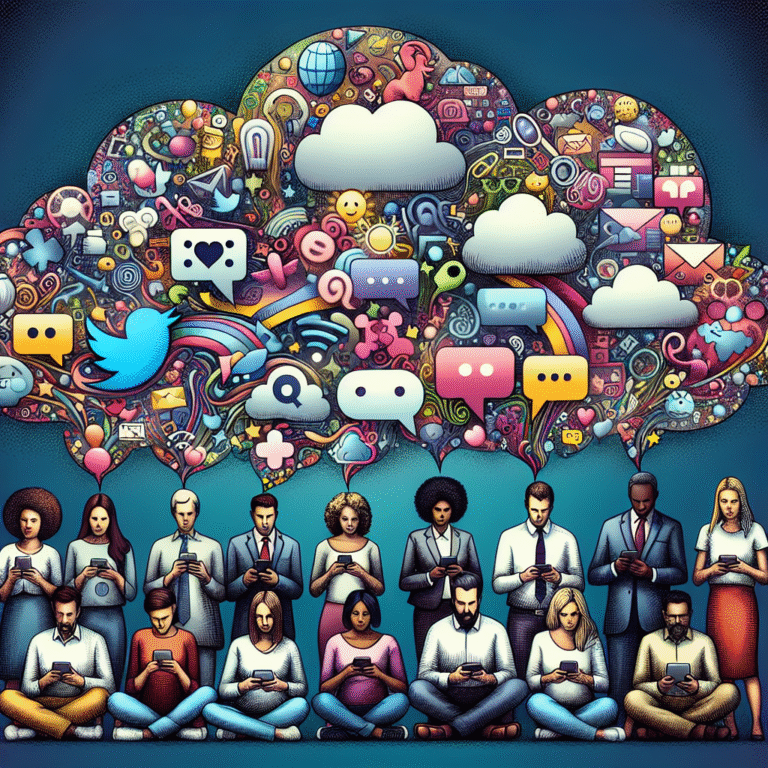
What makes us agree to requests from others? Is it a smart choice or are there hidden forces at work? For over 60 years, researchers have explored what makes us say yes.
There’s a science behind why we agree to requests. It’s not just about being persuasive. Knowing this science is key in marketing and personal relationships. By understanding influence psychology, we can better handle human interactions.
Key Takeaways
- The science of persuasion is rooted in understanding human behavior.
- Persuasion techniques can be used in various contexts, from marketing to personal relationships.
- Understanding why we say yes can help us make more informed decisions.
- The study of influence psychology has been ongoing for decades.
- Recognizing the factors that influence our decisions can help us become more effective communicators.
Understanding Persuasion Psychology
Persuasion psychology is key to our personal and work lives. It’s not just about getting what we want. It’s about understanding the complex ways we make decisions.
Persuasion psychology looks into the mental shortcuts we use when deciding. It shows how we can influence these shortcuts ethically. This knowledge helps us persuade others in a respectful and effective way.
Definition and Importance
Persuasion psychology studies how we are influenced to agree with requests. It uses theories and models to explain why we comply. Knowing persuasion psychology can improve our communication, negotiation, and influence in many areas, like marketing and leadership.
The study of influence psychology shows we often use mental shortcuts when deciding. These shortcuts can lead to biases and errors. By understanding these biases, we can make better decisions.
The Role of Influence in Daily Life
Influence is big in our daily lives, affecting how we interact with others and respond to ads. Compliance strategies are used to guide us toward certain choices. Knowing how influence works helps us make choices that reflect our values and goals.
By recognizing what influences our decisions, we can make choices that are truly our own. This awareness leads to more genuine and fulfilling interactions, both at home and at work.
The Six Principles of Persuasion
The art of persuasion is based on six key principles by Robert Cialdini. These principles, backed by psychology, explain why people agree to requests. They are essential for all kinds of interactions, not just marketing or sales.
Reciprocity: The Give and Take
Reciprocity is the first principle of influence. It says people feel they must return a favor or service they first received. This creates a sense of duty. For example, free samples from a company can make customers more likely to buy.
Reciprocity isn’t just about physical items. It can also be about services or help. A manager who supports their team can create an environment where employees are more willing to help out.
Commitment and Consistency: The Power of Follow-Through
The principle of commitment and consistency says people tend to stick to their commitments. This is because they value being consistent. Being inconsistent is seen as bad.
Businesses use this principle by asking customers to make public commitments or take small steps towards bigger goals. For example, signing a petition or buying something small can lead to more involvement because of the desire to stay consistent.
Social Proof: The Influence of Others
Social proof is another key principle. It shows that people often follow others, even when they’re unsure. Customer reviews and ratings are examples of social proof in marketing. Seeing positive feedback from others can make people trust and follow suit.
Social proof isn’t just about numbers. It can also come from respected or admired people. For instance, a celebrity endorsing a product can greatly increase its popularity because of their influence.
The Authority Principle
The authority principle shows how experts and trusted sources shape our choices. It’s seen in many areas, like healthcare and marketing. The way we see authority greatly affects our decisions and actions.
The Impact of Experts
Experts and authority figures deeply influence us. For example, in healthcare, showing medical diplomas can make patients trust their physiotherapists more. This trust leads to better following of exercise plans. It shows how authority affects our actions in real life.
In marketing, using famous people or experts to endorse products is common. This method tries to pass on the trust and credibility of the authority to the product. As a result, people are more likely to see the product as good and buy it.
How Credibility Affects Decisions
Credibility is key in the authority principle. It makes a message more persuasive. When we see a source as credible, we trust the message more.
A study found that being seen as an expert, trustworthy, and attractive are important. In persuasion, showing someone’s skills and success can make them more believable. This boosts their ability to persuade.
| Factor | Description | Impact on Credibility |
|---|---|---|
| Expertise | Demonstrated knowledge and skill in a specific area | High |
| Trustworthiness | Perceived honesty and integrity | High |
| Attractiveness | Physical appeal or likability | Moderate |
Knowing about the authority principle is vital for effective persuasion. By being credible and using experts, people and groups can get their messages across better. This helps them reach their goals.
“The key to successful persuasion is not to manipulate, but to understand the underlying principles that drive human behavior.”
Liking and Its Effect on Persuasion
The art of persuasion is all about making people like you. When we like someone, we’re more likely to agree with them. This is true in sales, marketing, and even in our personal lives.
Several things can make us like someone more. Similarity is a big one. We tend to like people who are like us.
The Role of Similarity
Being similar to someone makes us feel connected. When we see someone as similar, we trust them more. This is why highlighting what we have in common can help in persuasion.
For example, a salesperson might talk about a customer’s interests. This makes the customer more open to what they’re saying. Effective communication is key to building this connection.
| Factors Influencing Liking | Description | Impact on Persuasion |
|---|---|---|
| Similarity | Shared backgrounds, interests, or values | Increases trust and rapport |
| Compliments | Positive feedback or praise | Enhances likability and receptiveness |
| Cooperation | Working together towards mutual goals | Fosters a sense of teamwork and mutual benefit |
Building Rapport with Your Audience
Building rapport is key to using the liking principle. When you connect with your audience, they’re more likely to listen and agree with you.
“The ability to establish rapport with others is a critical skill in persuasion, as it builds trust and understanding.”
To build rapport, look for common interests, use positive body language, and show you care about their needs.

By understanding and using the liking principle, you can become more persuasive. This works in both professional and personal settings.
Scarcity: The Fear of Missing Out
The scarcity principle makes things more appealing when they’re hard to get. This is because humans tend to value things more when they’re rare. Marketers use this to boost sales and sway what people buy.
When we think something is rare, it becomes more attractive. This is because we fear missing out on something good. This fear is a big motivator.
How Limited Availability Impacts Choices
When things are scarce, it makes us act fast. We might buy something quickly because we don’t want to miss out. This rush is used in marketing with special offers and limited stock alerts.
This urge to act is rooted in loss aversion. The fear of losing something valuable is stronger than the joy of gaining something just as good. So, scarcity really drives our choices.
Examples from Marketing Strategies
Many marketing tactics use scarcity to get us to buy. For example, limited edition items make us want them more because they’re rare. This makes them seem special and exclusive.
Take British Airways stopping Concorde flights. The next day, sales went up because Concorde was now rare. This shows how scarcity can increase demand.
Other examples include:
- Limited-time offers that create a sense of urgency.
- Flash sales that are announced with short notice.
- Exclusive memberships or early access to new products.
By using the scarcity principle, marketers can craft strategies that influence our choices. This helps drive sales.
The Complexity of Decision Making
Understanding decision making is complex. It involves the psychology behind our choices. Most of our decisions happen in a split second. They are driven by shortcuts our brains have learned over time.
The Psychology Behind Choices
Our brain uses heuristics, or mental shortcuts, to make decisions fast. These shortcuts can sometimes lead to irrational choices. But they are key for dealing with daily life.
Key factors influencing our decisions include:
- Cognitive biases: Preconceived notions that affect our judgment.
- Emotional responses: Feelings that can sway our choices.
- Past experiences: Previous events that shape our decision-making processes.
Factors That Influence Our Decisions
Many factors influence our decisions. These range from our internal predispositions to external cues. Understanding these is key for making better choices.
The balance between intuition and deliberate reasoning is important. Intuition gives quick responses, while deliberate reasoning is more thoughtful.
By understanding the complexity of decision making, we can improve our choices in life.
Emotional Appeals in Persuasion
Emotional appeals are key in effective persuasion. They subtly sway our choices and actions. Emotions deeply influence our decisions, often leading the way before logic steps in to justify them.
Using Feelings to Drive Action
Feelings and emotions are vital in motivating people to act. Persuaders use emotions to connect deeply with their audience. This makes their messages more relatable and powerful. Emotional storytelling is a strong tool that can stir feelings like empathy, joy, or fear, shaping our decisions.
Many buying decisions are made without us realizing it. They’re driven by emotions, not logic. This shows how vital emotional appeals are in persuasive strategies. It ensures the message hits the audience on an emotional level.
The Balance Between Logic and Emotion
Emotions lead our initial decisions, and then logic justifies them. A good approach to persuasion blends emotional appeals with logical reasoning. This mix grabs the audience’s emotional side while providing rational backing for their choices.
Effective persuaders know the complex dance between logic and emotion. They craft stories that touch both the heart and mind. This creates a message that’s both engaging and believable. By striking this balance, they build a strong, meaningful connection with their audience.
The secret to successful emotional appeals is knowing the audience’s emotional landscape. Crafting messages that align with their feelings and values is key. This way, persuaders can make a lasting impact, driving immediate action and long-term loyalty.
Persuasion in Marketing
Marketers need to know how to persuade to make their campaigns work. They use psychology to change how people think and act, aiming to sell more.
Techniques Employed by Brands
Brands use many ways to get people to buy what they offer. They use Cialdini’s principles like reciprocity and social proof. For example, free trials or samples make people want to buy back.
Key Techniques:
- Reciprocity: Giving free samples or trials
- Social Proof: Using customer reviews
- Authority: Working with influencers
- Scarcity: Making offers only for a short time
Case Studies of Successful Campaigns
The 2008 Obama campaign is a great example of using persuasion. It used reciprocity and authority to get people involved.
| Campaign | Technique Used | Outcome |
|---|---|---|
| 2008 Obama Presidential Campaign | Reciprocity, Authority | Mobilized significant support through volunteer opportunities and endorsements |
| Dove’s Real Beauty Campaign | Social Proof, Liking | Enhanced brand loyalty by resonating with the target audience’s values |

Marketers can make better campaigns by using these persuasion methods. This way, they can connect with their audience better.
The Digital Influence
The digital age has changed how we persuade others. Social media and online reviews are now key players. It’s important to know how to persuade online.
Social Media and Persuasion Tactics
Social media is a big deal for persuasion. It helps brands reach and influence people. They use it to share cool content, grow their brand, and sell more.
Good tactics on social media include:
- Creating stories that people can relate to
- Working with influencers to gain trust
- Targeted ads to find the right audience
Brands can make a big impact by knowing how social media works.
Online Reviews and Their Impact
Online reviews are super important for buying decisions. Good reviews can make a brand look good and attract more customers. Bad reviews can scare people away.
Important things about online reviews are:
- People trust what others say more than what brands say
- Reviews on sites like Google and Yelp help with trust and search rankings
- How brands respond to reviews shows their customer service
Handling online reviews well can help businesses build trust and sell more.
In summary, digital persuasion is complex, with social media and reviews playing big roles. By using these tools wisely, brands can connect with their audience better.
Ethical Considerations in Persuasion
The study of persuasion brings up big questions about the right use of influence and manipulation. It’s key to look at the ethics behind these methods.
Persuasion can be a strong force for good when used right. But, it’s easy to cross the line from influence to manipulation. Influence means guiding others in a clear and respectful way. Manipulation uses tricks to get what you want.
The Fine Line Between Influence and Manipulation
It’s important to know the difference between influence and manipulation. Influence lets people make choices based on facts. Manipulation takes away their freedom by using tricks.
To stay on the right side, think about why you’re trying to persuade. Are you really helping others, or just yourself? Good persuasion matches what people want with real value, making their lives better.
Best Practices for Ethical Persuasion
To make sure our persuasion is ethical, follow these steps:
- Transparency: Be open about what you’re trying to do and what might happen.
- Respect for Autonomy: Let others decide for themselves.
- Honesty: Don’t lie or mislead to get what you want.
- Benefit-Oriented: Always aim to add real value for others.
By following these guidelines, we can use persuasion to make things better without losing trust or respect.
The Role of Narrative and Storytelling
Narrative and storytelling are key in shaping our views and choices. They are vital in the art of persuasion. By using stories wisely, messages become more emotional and relatable.
Why Stories Are Powerful Persuasive Tools
Stories are great at stirring emotions and sharing complex ideas in fun ways. They help connect the storyteller with the listener. As Joseph Campbell noted, “The myth is a public dream, and the dream is a private myth.” This shows how stories touch everyone.
“Storytelling is the most powerful way to put ideas into the world today.”
Stories create a strong bond with the audience. This bond makes them more likely to listen and remember the message.
How to Craft Compelling Narratives
To make great stories, know your audience and what you want to say. Use detailed descriptions to make your story vivid. A good story has a clear start, middle, and end. It should have characters we can root for.
- Identify the core message you want to convey.
- Understand your audience’s values and interests.
- Use descriptive language to create vivid imagery.
- Structure your narrative with a clear progression.
By following these steps, you can make stories that grab attention and persuade. Stories have the power to change minds and actions.
Understanding Cognitive Biases
Recognizing cognitive biases is the first step to overcoming them. These biases are patterns that affect our judgments and actions. They influence our decisions and behaviors deeply.
These biases can cause errors in judgment and decision-making. They impact many areas of our lives, from personal relationships to work. Understanding these biases helps us develop strategies to lessen their effects.
Common Biases That Influence Decisions
Many cognitive biases affect our decisions. Some of the most common include:
- Confirmation Bias: Looking for information that supports our beliefs or hypotheses.
- Anchoring Bias: Relying too much on the first piece of information we get, even if it’s not reliable.
- Availability Heuristic: Overestimating the importance or likelihood of information that’s easily available.
- Hindsight Bias: Thinking an event was predictable after it happens, and that we would have predicted it.
These biases can greatly affect our decision-making, often leading to less-than-ideal choices.

Strategies to Overcome Biases
While cognitive biases are part of human thinking, we can fight their effects. Some effective ways include:
- Seeking diverse perspectives: Exposing ourselves to different views helps counteract biases like confirmation bias.
- Encouraging critical thinking: Creating a culture of critical thinking helps us evaluate information more objectively.
- Using decision-making frameworks: Structured decision-making processes can lessen biases like anchoring and availability heuristic.
- Practicing mindfulness and self-reflection: Being aware of our biases and thought processes helps us make better, less biased decisions.
By using these strategies, we can improve our decision-making. This leads to more informed and rational choices.
The Future of Persuasion Psychology
The future of persuasion psychology looks very promising. We’re getting better at understanding how people think and make decisions. This means the ways we persuade others will also get more advanced.
Emerging Trends in Influence
Several new trends are set to change persuasion psychology. These include:
- Increased Personalization: Thanks to better data analytics and AI, we can tailor our persuasion methods. This makes them more effective.
- Ethical Considerations: As people learn more about persuasion, there’s a push for more ethical use of these techniques.
- Integration of Neuroscience: Adding neuroscience to persuasion psychology gives us deeper insights. This leads to more advanced ways to influence people.
Predictions for the Next Decade
Looking into the next decade, here’s what we can expect:
- Technology, like AI and machine learning, will play a bigger role. This will lead to more precise and effective persuasion methods.
- There will be more focus on being open and ethical in persuasion. This is because consumers want more responsible practices.
- The line between persuasion and manipulation will keep being discussed. This has big implications for how we use persuasion techniques.
The future of persuasion psychology is exciting. It will be more complex, rely more on technology, and focus more on ethics. By keeping up with these trends and predictions, experts in the field can get ready for what’s coming.
Practical Applications of Persuasion Techniques
Persuasion is key in both personal and professional settings. It’s not just for sales or marketing. It’s a skill that can improve many areas of our lives.
In Personal Relationships
In personal relationships, using persuasion can strengthen bonds. The principle of reciprocity helps build mutual respect. Doing something for someone else often leads to them doing the same, creating a positive cycle.
- Use active listening to understand the other person’s needs and concerns.
- Apply the principle of liking by finding common ground or shared interests.
- Employ emotional appeals to create empathy and deeper connections.
Robert Cialdini, an expert in influence, said, “The key to influence is to be likable and to be seen as an authority.” This shows how important it is to build rapport and credibility in personal relationships.
In Leadership and Management
In leadership and management, persuasion is vital for making decisions and motivating teams. Leaders who can clearly share their vision can inspire their teams to reach new heights.
The principle of authority is key in leadership. Showing expertise and experience can greatly improve a leader’s influence over their team.
- Demonstrate expertise and knowledge to establish authority.
- Use social proof by highlighting successful projects or team achievements.
- Apply the principle of scarcity to create a sense of urgency around important tasks or decisions.
Good leaders know persuasion is about inspiring, not forcing. As John Maxwell said, “A leader is one who knows the way, goes the way, and shows the way.”
Learning Persuasion Skills
Learning to persuade can make your personal and work life better. To get good at it, you need to be open to learning and trying out different methods.
Good persuasion comes from knowing how people think and make choices. When you understand these, you can better influence others and reach your goals.
Resources and Training Opportunities
There are many ways to get better at persuasion. Here are a few:
- Books and articles on persuasion and influence
- Online courses and training programs
- Workshops and seminars on effective communication
- Coaching and mentoring from experienced professionals
Influence: The Psychology of Persuasion by Robert Cialdini is a great start. It covers the basics of influence. You can also find courses on persuasion, negotiation, and communication on platforms like Coursera and Udemy.
Practicing Persuasion in Everyday Life
Practicing persuasion every day is key to getting better. Here’s how:
- Engage in conversations and debates
- Join in group discussions and meetings
- Negotiate to find solutions that work for everyone
- Ask for feedback on how you communicate
Keep practicing and you’ll get better at persuading others. Remember, persuasion is a skill that can be developed over time with dedication and practice.
Conclusion: The Lasting Impact of Persuasion Psychology
Understanding persuasion psychology changes how we act in our personal and work lives. It helps us make better choices and talk more effectively. This knowledge is key to improving our communication and decision-making.
The power of persuasion comes from several important ideas. These include giving back, making commitments, following what others do, respecting authority, liking people, and feeling like we’re missing out. These ideas shape our daily lives, from ads to our personal connections.
Key Takeaways and Applications
Looking back, we see that persuasion psychology is more than just changing others. It’s also about knowing what influences us. By using persuasion, we can improve our communication, strengthen relationships, and make smarter choices.
Moving Forward with Persuasion Psychology
As we go forward, using what we’ve learned from persuasion psychology can help us lead better, build stronger bonds, and understand human behavior better. The lasting effect of persuasion psychology is its ability to empower both individuals and groups.

















